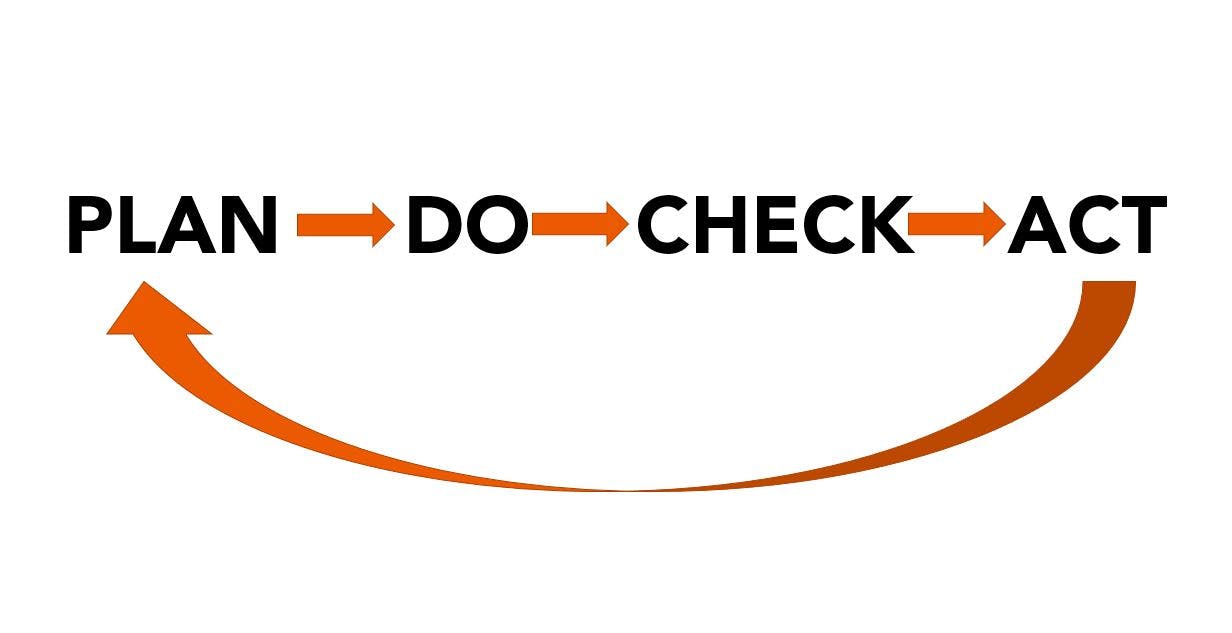What is the Continuous Improvement Process?

The continuous improvement process has become one of the most widely touted concepts in improving many functions of businesses today. It may seem easy to get things in order and eliminate all of the waste, but it certainly isn’t. Running a legitimate manufacturing facility and minimizing as much waste as possible is one of the main goals in lean manufacturing, and this where the continuous improvement process comes in. To succeed with this concept you need to develop a thorough understanding of what you want to achieve within your facility. These below principles are best practices and guidelines that have worked within other processes to reduce their amount of waste.
What is the Continuous Improvement Technique?
To explain the continuous improvement model quickly is that it is an endless endeavor towards perfection in everything you do. Continuous improvement has been adopted by the manufacturing world with the adoption of lean manufacturing, because of the value it has in improving efficiency and operations in lean manufacturing. The process of looking for issues and aiming to improve every single process throughout the storage, production, and distribution of your products is key to this process. Taking small steps and focusing on strengthening every process in your company with keeping in mind the value it brings the customer plays a significant role in how this process came about.
Want to stay up to date? Subscribe to our newsletter
Kaizen
The continuous improvement process is also commonly referred to as Kaizen. Kaizen is the concept that refers to business activities that strive for continual improvement. Kaizen covers all functions, processes, and employees throughout an organization. Kaizen is a Japanese term and was first implemented by businesses in Japan after World War 2, most famously championed as part of the Toyota way of manufacturing.
Since then, the term Kaizen in English has most commonly been linked with continual improvement, especially in a business context.

Plan-Do-Check-Act
The concept of Plan-Do-Check-Act is one of the most widely used continuous improvement approaches. It is an endless cycle to improve each process. The PDCA method had initially been developed to help within the quality checking process but was then adapted towards helping to eliminate waste and improving other processes and functions within facilities. It also commonly known as the “Deming Wheel” and was developed by Dr. William Edwards Demming during the 1950s. It was created as a concept to determine why products didn’t meet customers’ expectations.
The PDCA model is a four-step process that involves testing possible solutions, assessing feedback and results, then implementing the results that are shown to improve the process or raise customers’ satisfaction. The four stages of the model are:
Plan: This stage involves classifying areas of improvement or opportunities within the manufacturing process.
Do: This stage involves developing hypotheses and ideas about what actions could lead to improvements in the process.
Check/Study: This stage involves assessing if the ideas and hypotheses led to a positive outcome.
Act: This stage involves implementing the change in the process if the hypotheses led to an improvement.
Root Cause Analysis
The root cause analysis is another widely used tool for problem-solving and locating the root cause for a shortcoming or fault. It centers around finding why the issue occurred in the first place, with the primary aim in determining the origin of the problem.
Root Cause Analysis concludes that everything is interrelated, and therefore if an error occurs in one area, it will have an impact across the whole company. By tracing back these errors, you can determine where the error arose and how it caused faults in other areas. RCA determines that errors most often occur in 3 primary areas:
Physical errors: This type of error is related to equipment errors.
Human errors: This type of error relates to if a person has performed an action incorrectly or missed something that needed to be completed in the process.
Organization errors: This type of error relates to a process, system, or policy error within the company.
Root cause analysis takes these three basic ideas and uses them to determine the causes of errors that lead to operational inefficiencies.
While the above techniques are commonly used methods for implementing continuous improvement, it doesn’t mean you cannot find your own methods. There are many ways to improve functions, processes, equipment throughout the organization, and it may not be found using these techniques. It primarily comes down to the mindset of looking for and analyzing current processes to find ways to improve them. Implementing these techniques can help with that analysis, but the mindset needs to be established at an organizational level for continual improvement to make a considerable impact.

